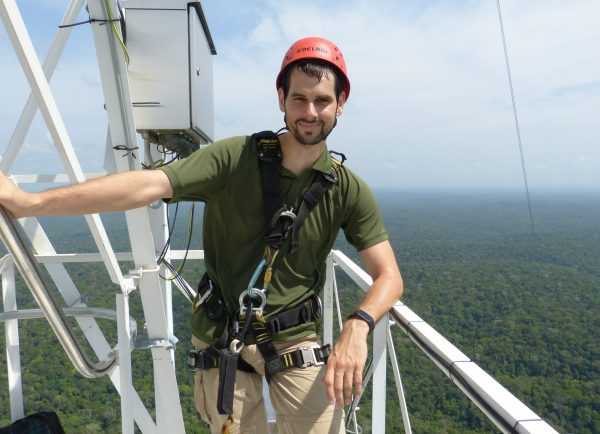Hello out there! My name is Sebastian Donner and I work in the satellite remote sensing group at the Max-Planck-Institut für Chemie in Mainz as a PhD student.
I studied Meteorology in Mainz and then stayed here to obtain my Bachelor’s and Master’s degrees. Already back then, I was really fascinated by the atmosphere’s composition, and by the ways and means to monitor air quality and pollution. That’s how I became involved with a method called MAX-DOAS. MAX-DOAS means Multi-Axis Differential Optical Absorption Spectroscopy. This is a rather fancy method to measure the abundance of trace gases in the atmosphere and retrieved their vertical profiles. I had the opportunity to work on the construction, characterization and further development of it during both my Bachelor and Master projects at the MPI-C. I was also involved with the first applications of this instrument to atmospheric measurements.
In my PhD project, I am interested in the variation of tropospheric formaldehyde in different places and at different times of the year. This trace gas is important because it is heavily involved in tropospheric chemistry. We can use it to identify different chemical regimes and VOC oxidation pathways. However, there are still quite a lot of open questions regarding formaldehyde. To answer them, my colleagues and I operate MAX-DOAS instruments all over the world. Since 2017 we also have one at ATTO. There I have the opportunity to collect valuable data at a very remote place with only little anthropogenic pollution. So far I visited the ATTO site three times and it is always a special experience. And thanks to the helpful ATTO staff, working at this unique location is a joy despite some of the challenges.


